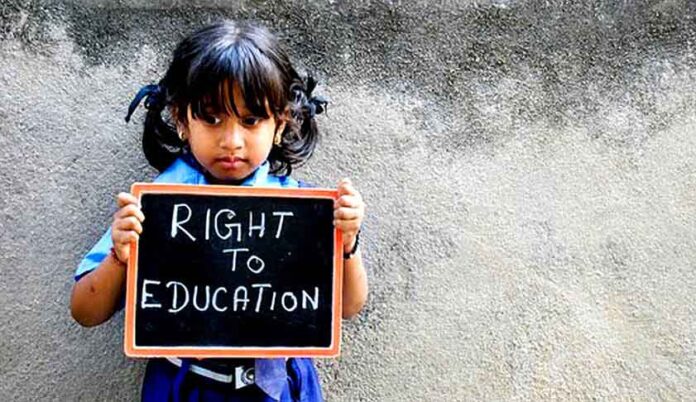The need for children’s education has increased dramatically over time. Everyone recognises the importance of education in a child’s overall development, from the wealthiest to the poorest. Essentially, the three goals of education are to develop the body, mind, and spirit. And a perfect education system fulfils all three of them.
The fact that barely 50% of Indian children between the ages of 6 and 14 attend school is extremely worrisome. Three million children lying in the ages of 6 and 14 do not attend school. Additionally, 70 million kids worldwide are prohibited from attending school each day. We will learn about the fundamental need for education in relation to human rights, the difficulties facing education in India, the rights linked with education, acts, amendments, funding allocations, and many other elements relating to the Indian Constitution in this article.
Right to Education Act
The government of India passed the Right to Education act for free and compulsory education, or RTE, and declared education a basic right for children aged 6 to 14 in an effort to address these grave problems.
The Right to Education Act is a piece of legislation that the Indian Parliament introduced on August 4th, 2009, and it serves as a model for the value of free and mandatory education for children between the age groups of 6 and 14 in India. India has joined a list of 135 nations that recognise the Right to Education Act for every child as fundamental freedom protected by Article 21A of our constitution. This law became effective on April 1st, 2010.
Challenges and Implications
Although the Right to Education Act has been elevated to the status of a basic right, it is still a parliamentary process that is expected to succeed in the near future for a nation that has seen ten years of policy failure. We note that neither free nor compulsory schooling is ever inexpensive. Making a move through legislative passage represents a significant change for the state-guaranteed education provisions provided to underprivileged groups who have historically seen those laws fall short of defending the interests of the minority class.
One of the main factors preventing India from progressing and preventing it from achieving its high level of literacy is the disconnect between discourse, debate, and structural framework in all policy efforts in education and, more particularly, development, which has been the primary genesis for India’s poor performance in safeguarding the equal and fair educational opportunity for all. Another more important component that always stands in the way of any policy is “Poverty,” which is to blame for a number of issues in India, including the low rate of female literacy. More than two-thirds of Indians are considered to be poor. Many families are still hesitant to enrol their children in school, despite the government’s efforts to make primary education free. As parents consider going to work and making a living instead of attending school, which is located a great distance from their towns or houses.
86th Constitutional Amendment Act
This constitutional amendment is intended to protect citizens’ rights to an education. Given the challenges India faces in the area of education, it is crucial for the country’s policymakers to amend the constitution and make changes to its educational system so that more Indians can exercise their rights mentioned in the Right to an Education Act and improve their lives for the future. Three additional amendments to our constitution are made by the 86th Fundamental Amendment Act of 2002 for improved functionality and to help students between the age group of six and fourteen to better comprehend their Constitutional Right to a free and public education.
Without education, people are less likely to develop the skills they need to live decent lives and contribute to society effectively. The Right to Education Act makes education for every child a fundamental human right. It is now essential that we, the people of India, work together to ensure the execution of this law in its true spirit since the Right to Education Act has given us the means to deliver quality education to all of our children. Though we must voluntarily step up for the same, the government is committed to this duty. Only by collective action will there be genuine change. Save the Children is constantly making an effort to fight for the rights of the children, and with your support, they can excel in this battle of education.













